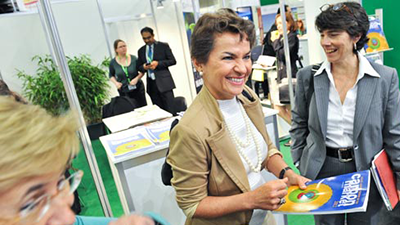The ninth annual Carbon Expo opened in Cologne, Germany, on May 30 with a full house and rousing call to action from Christiana Figueres, the executive secretary of the United Nations Framework Convention on Climate Change (UNFCCC).
Figueres thanked the audience for their continued interest in and support for the carbon market. Participation in today’s market is not for the faint of heart, she said. But, she added, using her favorite saying, there is no such thing as the impossible – it’s just a matter of attitude.
"We're into year four of international financial turmoil, and despite that, governments are persevering, slowly, but step by step, in evolving the climate regime to where we all know that it has to go. They're persevering basically because they and we know that there is no other option," Figueres said.

